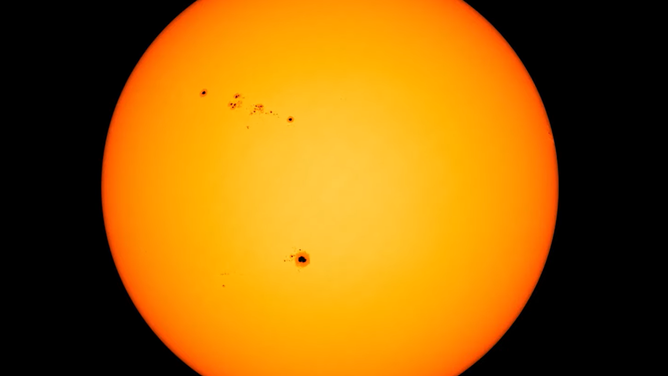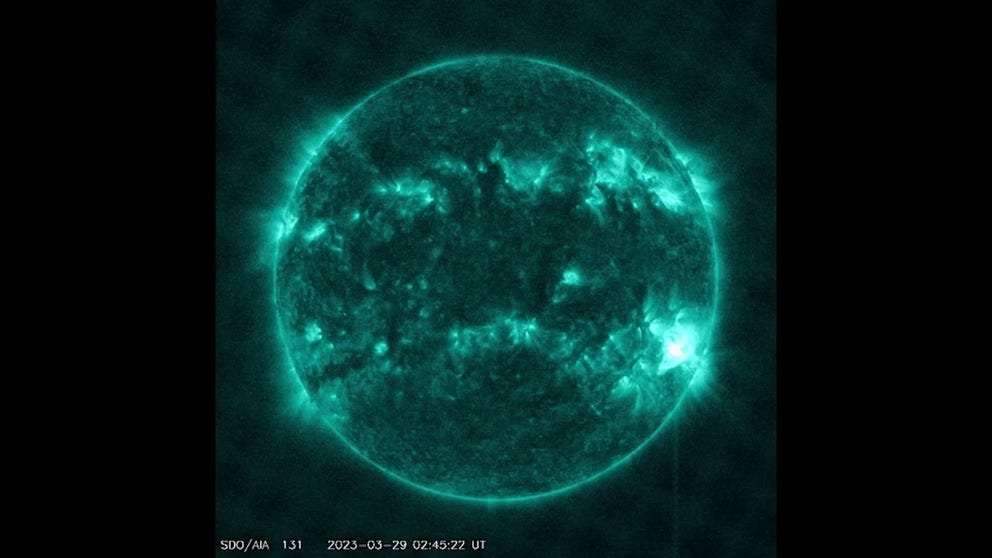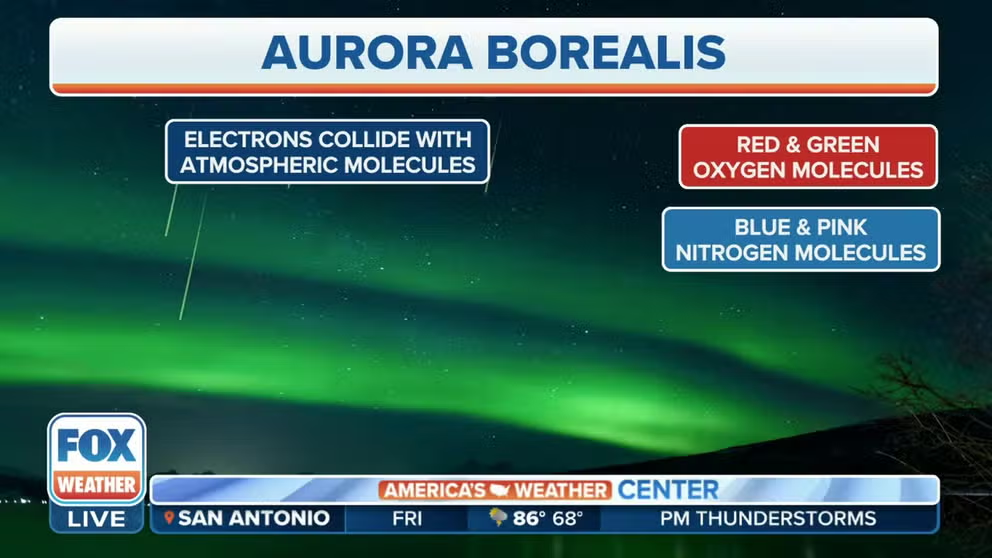See the giant sunspot estimated to be about 4 times larger than Earth
Sunspots are caused by magnetic fields that twist in a chaotic manner and often create solar flares and coronal mass ejections. According to NASA, the sun goes through cycles of high activity and periods of reduced activity. The current solar cycle is expected to peak in July 2025, with around 115 sunspots.
Watch: Intense solar flare erupts from the sun
Imagery from NASA’s Solar Dynamics Observatory captured imagery of a powerful solar flare bursting from the sun. (Courtesy: NASA SDO)
A sunspot around the size of about four Earths is so large in scale astronomy experts say it can be viewed with only sufficient eye protection and without the use of a telescope.
The sunspot is known as AR3310 and is likely a result of the star’s transition into what is known as the solar maximum.
According to NASA, sunspots are caused by magnetic fields that twist in a chaotic manner and often create solar flares and coronal mass ejections.
When pointed at Earth, these events can generate geomagnetic storms which interfere with electronics and produce stunning auroras.
"Depending on the magnitude of the storm, those auroras can push far enough down into the U.S. to be visible to a lot more people," NASA Ambassador Tony Rice stated.

Under perfect viewing conditions, sunspot AR3310 can be seen without a telescope, with the right protection.
(Solar Dynamics Observatory / NASA)
Only certified solar viewing lenses, or what are otherwise known as solar eclipse glasses, can be used to stare directly at the sun. Looking at the sun without proper protection can lead to severe eye damage.
The giant star is a source of constant energy that has been known to wane and wax during what are known as solar cycles.
The sun is thought to be in a heightened activity stage which is expected to peak in 2025, with around 115 sunspots.
NASA estimates the magnetic field in these sunspot regions is about 2,500 times stronger than Earth’s poles. The enhanced magnetic field inhibits the flow of heat and gasses into the sunspot region, leading to much cooler temperatures.
The temperature at the surface of the sun is estimated to be at around 10,000 degrees Fahrenheit, while a sunspot could be 6,300 degrees Fahrenheit.
7 THINGS TO KNOW ABOUT NORTHERN LIGHTS
Prior to the peak of what is known as Solar Cycle 25, NOAA intends to launch a spacecraft that will sample solar wind and increase monitoring of the sun’s activity.
Enhanced observations are expected to help improve space weather forecasting and alerts for when events could be distributive on Earth.
Northern Lights on the rise, to become more likely in the next few years
Robert Steenburgh, Acting Operations Chief for NOAA’s Space Weather Prediction Center, discusses why Thursday's Northern Lights event wasn't as visible as the last one in April. He also explains why the Northern Lights could become more likely in the next few years.

